Filter by

Advances in Microbiology, Infectious Diseases and Public Health: Volume 4
The Advances in Microbiology, Infectious Diseases and Public Health Series will provide microbiologists, hygienists, epidemiologists and infectious diseases specialists with well-chosen contributed volumes containing updated information in the areas of basic and applied microbiology involving relevant issues for public health, including bacterial, fungal and parasitic infections, zoonoses and a…
- Edition
- Ed. 1
- ISBN/ISSN
- 978-3-319-43207-6
- Collation
- V, 125
- Series Title
- Advances in Experimental Medicine and Biology
- Call Number
- 576 ADV a

Advances in Microbiology, Infectious Diseases and Public Health: Volume 2
This Series will provide microbiologists, hygienists, epidemiologists and infectious diseases specialists with well-chosen contributed volumes containing updated information in the areas of basic and applied microbiology involving relevant issues for public health, including bacterial, fungal and parasitic infections, zoonoses and anthropozoonoses, environmental and food microbiology. The in…
- Edition
- Ed. 1
- ISBN/ISSN
- 978-3-319-27935-0
- Collation
- VI, 134
- Series Title
- Advances in Experimental Medicine and Biology
- Call Number
- 576 ADV a

Advances in Microbiology, Infectious Diseases and Public Health: Volume 1
The Series will provide microbiologists, hygienists, epidemiologists and infectious diseases specialists with well-chosen contributed volumes containing updated information in the areas of basic and applied microbiology involving relevant issues for public health, including bacterial, fungal and parasitic infections, zoonosis and anthropozoonosis, environmental and food microbiology. The inc…
- Edition
- Ed. 1
- ISBN/ISSN
- 978-3-319-26320-5
- Collation
- VI, 124
- Series Title
- Advances in Experimental Medicine and Biology
- Call Number
- 576 ADV a
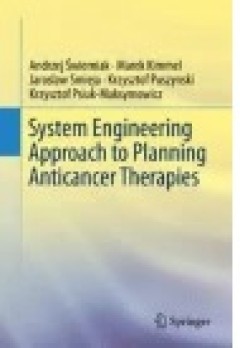
System Engineering Approach to Planning Anticancer Therapies
This book focuses on the analysis of cancer dynamics and the mathematically based synthesis of anticancer therapy. It summarizes the current state-of-the-art in this field and clarifies common misconceptions about mathematical modeling in cancer. Additionally, it encourages closer cooperation between engineers, physicians and mathematicians by showing the clear benefits of this without stating …
- Edition
- -
- ISBN/ISSN
- 978-3-319-28095-0
- Collation
- IX, 235
- Series Title
- -
- Call Number
- -

ABC Transporters - 40 Years on
This book provides new structural, biochemical, and clinical information on ABC transporters. The authors explore and describe the state of the art of research, knowledge, and prospects for the future for this important family of proteins. The first ABC transporter was discovered in 1973 and was named P-glycoprotein. It elicits resistance to cytotoxic drugs, chiefly in human tumours, within wh…
- Edition
- Ed. 1
- ISBN/ISSN
- 978-3-319-23476-2
- Collation
- XIV, 376
- Series Title
- -
- Call Number
- 574.192 ABC a
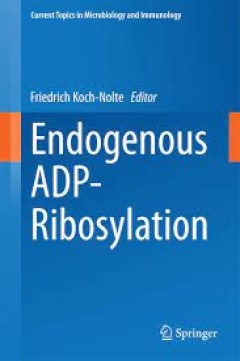
Endogenous ADP-Ribosylation
This volume gathers the latest exciting findings on ADP-ribosylation from renowned experts in the field. It includes ten chapters, organized into the following three thematic sections: · Evolution and detection of endogenous ADP-ribosylation · ADP-ribosylation by the ARTC family of ADP-ribosyltransferases (R-S-E ARTs) · ADP-ribosylation by the ARTD family of ADP-ribosyltransfe…
- Edition
- -
- ISBN/ISSN
- 978-3-319-10771-4
- Collation
- VIII, 213
- Series Title
- -
- Call Number
- -

Encyclopedia of Metagenomics Genes, Genomes and Metagenomes. Basics, Methods…
Metagenomics has taken off as one of the major cutting-edge fields of research. The field has broad implications for human health and disease, animal production and environmental health. Metagenomics has opened up a wealth of data, tools, technologies and applications that allow us to access the majority of organisms that we still cannot access in pure culture (an estimated 99% of microbial lif…
- Edition
- -
- ISBN/ISSN
- 978-1-4899-7478-5
- Collation
- 39 b/w illustrations, 178 illustrations in colour
- Series Title
- -
- Call Number
- -
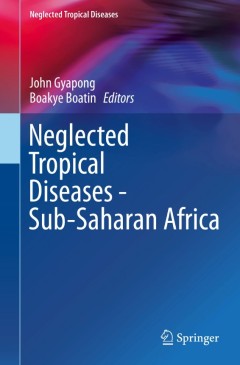
Neglected Tropical Diseases - Sub-Saharan Africa
This book provides an overview on the major neglected tropical diseases (NTDs) occurring in Sub-Saharan Africa, such as Leishmaniasis, Buruli Ulcer and Schistosomiasis. In well-structured chapters epidemiology and biology of these parasitic diseases will be discussed in detail. Further, diagnostics and therapeutic approaches as well as prevention strategies will be reviewed. The book will be of…
- Edition
- 1
- ISBN/ISSN
- 978-3-319-25469-2
- Collation
- XIV, 414
- Series Title
- Neglected Tropical Diseases
- Call Number
- -
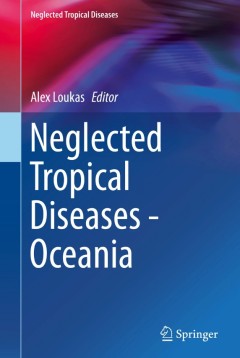
Neglected Tropical Diseases - Oceania
This volume of the Neglected Tropical Diseases (NTD) series covers the most prevalent NTDs in Oceania. This book will discuss in detail pathology, diagnostics and control approaches of selected NTDs in the geographic region. A large part of Oceania’s population lives in poverty and therefore is at high risk for certain parasitic diseases, such as hookworm infection, lymphatic filariasis, stro…
- Edition
- 1
- ISBN/ISSN
- 2194-8275
- Collation
- V, 294
- Series Title
- Neglected Tropical Diseases
- Call Number
- -
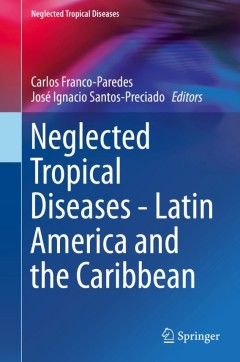
Neglected Tropical Diseases - Latin America and the Caribbean
This book addresses the major neglected tropical diseases (NTDs) – based on their prevalence and the years of healthy life lost to disability – in Latin American and Caribbean countries. These include Chagas disease, leishmaniasis, hookworm infection, and other soil-transmitted helminth infections, followed by dengue, schistosomiasis, leishmaniasis, leprosy, cysticercosis, bartonellosis, Pl…
- Edition
- 1
- ISBN/ISSN
- 978-3-7091-1421-6
- Collation
- VIII, 243
- Series Title
- Neglected Tropical Diseases
- Call Number
- -
 Computer Science, Information & General Works
Computer Science, Information & General Works  Philosophy & Psychology
Philosophy & Psychology  Religion
Religion  Social Sciences
Social Sciences  Language
Language  Pure Science
Pure Science  Applied Sciences
Applied Sciences  Art & Recreation
Art & Recreation  Literature
Literature  History & Geography
History & Geography